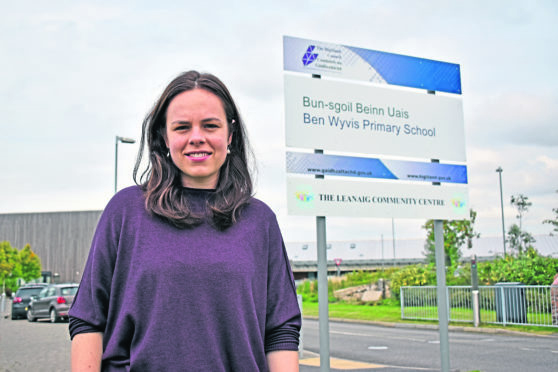The UK has the biggest and most unequal gap between the best and the worst performing regions in Europe.
That means the UK economy is essentially firing on one cylinder – London and the south-east.
The gap in regional disparity in the UK is about 10 times the international average.
It does not need to be like that, and in recent weeks the economy has been front and centre of the national debate.
The Sustainable Growth Commission, followed by other pieces of work, have elevated the discussion and forced us to face the harsh economic facts.
We have unparalleled opportunities in the north of Scotland to grow our local economy, attract people to the region and become globally renowned centres of excellence.
So many of Scotland’s growth sectors rely on the Highlands and Islands – particularly, tourism, food and drink and renewables.
With a new university providing appropriate courses and training programmes, more investment in improving quality and an international reputation as the most beautiful country in the world, with some of the tastiest food and drink and the greenest sources of energy, our potential is crystal clear.
To make the most of the opportunities, we need people. And to get the people, we need affordable housing.
Now, it can’t be solved overnight but it is inescapably tied up with population retention, public services and business growth.
The gap between average salaries is lower on average, and house prices in rural areas is higher on average so the affordability gap makes it really difficult for people to move in or to move up the property ladder.
There have been huge leaps in building more homes under the Scottish Government. In the last term, the government exceeded its target of 30,000 new affordable homes.
With this government, there is an even more ambitious target of 50,000 affordable homes backed up by £3billion. I asked the Minister for Housing a parliamentary question about the Government’s spend on affordable housing and was pleased to hear that Highland Council will have £184million to spend on affordable homes in the coming years, demonstrating the importance placed on the Highlands.
I am determined to ensure that areas of my constituency which are most in need of new homes are prioritised and that means getting beyond the urban centres and into rural villages.
We are seeing early results, with Skye and Lochalsh Housing Association building 200 new homes with £25million. The building project has already started.
Of course, there are other models for housing too, where the government has facilitated other groups or people to build the housing that they want.
One of the challenges historically is the inability of crofters, farmers or those with a bit of land to secure a mortgage.
The Scottish Government piloted and has now rolled out the Self-Build Loan Fund which enables people to build their home.
Equally, communities have never had such easy access to finance or enjoyed so much power to acquire land and buildings. Community Trusts in Staffin and Strontian are building affordable homes to reverse local trends of depopulation.
I believe that there is a role for business too, when they are sitting on land that could be developed and need housing for employees.
All in all, the government is directly building and facilitating new affordable homes right across the Highlands, which is vital to economic growth and strong public services in the Highlands.
We’re far more familiar with the plight of emigration in the Highlands, than with immigration.
Thankfully we are relatively removed from the vitriolic debates about immigration that take place elsewhere.
Despite that, there have been countless examples of families and individuals being unfairly deported from the Highlands.
These are talented migrants, who have chosen to make the north of Scotland their home and who contribute to the local economy.
Despite that, the UK Government’s rigid immigration policies have sent them packing showing just how far removed from reality the Home Office is.
I firmly believe that we need immigration policies which recognise the need to grow our working age population.
Take graduates for example. Since the Post Study Work Visa was removed, the number of talented international students have fallen.
It has since been reintroduced for four English universities. But, why should the University of the Highlands and Islands and Aberdeen University miss out on international students just because of the UK Government’s narrow ideology on immigration?
If the UK Government isn’t going to do anything, then we need to devolve immigration.
Like other Staggies, I was really sorry to see Ross County’s relegation from Scotland’s top flight.
Although it means that both Highland clubs are now in the Championship, it does not undermine Ross County’s fantastic legacy of football training.
Young people travel from right across the Highlands to train at the Highland Football Academy, ensuring aspiring footballers in the Highlands get just the same opportunities to realise their dreams as young people elsewhere in Scotland.
Of course, it’s not just about the physical training or football games. It’s also about nurturing aspiration and ambition, which are sorely needed amongst our young people.
Statistics from the Prince’s Trust suggest that over half of young people in Scotland believe a lack of self-confidence holds them back in life.
Whether it is Ross County’s Football Academy or the many youth work projects right across the Highlands, they do a tremendous job of building up confidence and opening up opportunities for young Highlanders.










